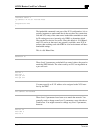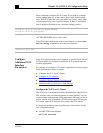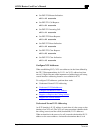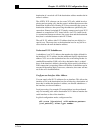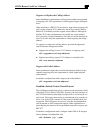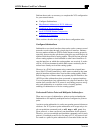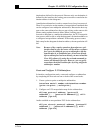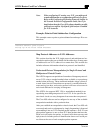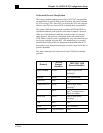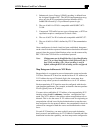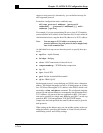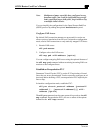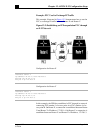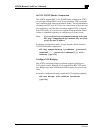
Chapter 12: AI2524 X.25 Configuration Steps
August 1997 Page 12-15
2524UM
tination host defined for the protocol. Because only one destination is
defined for the interface, the routing process need not consult the des-
tination address in the datagrams.
A multipoint subinterface is used to connect hosts for a given protocol.
There is no restriction on the number of encapsulation commands that
can be configured on a multipoint subinterface. Because the hosts ap-
pear on the same subinterface, they are not relying on the router to dis-
tribute routing updates between them. When a routing process
forwards a datagram to a multipoint subinterface, the X.25 encapsula-
tion process must be able to map the datagram's destination address to
a configured encapsulation command. If the routing process cannot
find a map for the datagram destination address, the encapsulation will
fail.
Note: Because of the complex operations dependent on a sub-
interface and its type, the router will not allow a subinter-
face type to be changed, nor can a subinterface with the
same number be re-established once it has been deleted.
After a subinterface has been deleted, you must reload the
Cisco IOS software (by using the reload command) to
remove all internal references. However, you can easily
reconstitute the deleted subinterface by using a different
subinterface number.
Create and Configure X.25 Subinterfaces
In interface configuration mode, create and configure a subinterface
by completing the first task and one or both of the second tasks:
1. Create a point-to-point or multipoint subinterface.
interface serial
number.subinterface-number
[point-to-point | multipoint]
2. Configure an X.25 encapsulation map for the subinterface:
x25 map
protocol address
[
protocol2
address2
[... [
protocol9 address9
]]]
x121-
address
[
option
]
And/or establish an encapsulation PVC for the subinterface:
x25 pvc
circuit
protocol address
[
protocol2
address2
[...[
protocol9 address9
]]]
x121-
address
[
option
]




